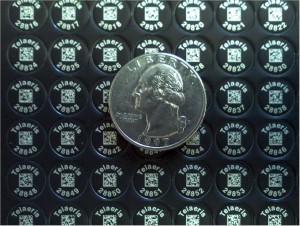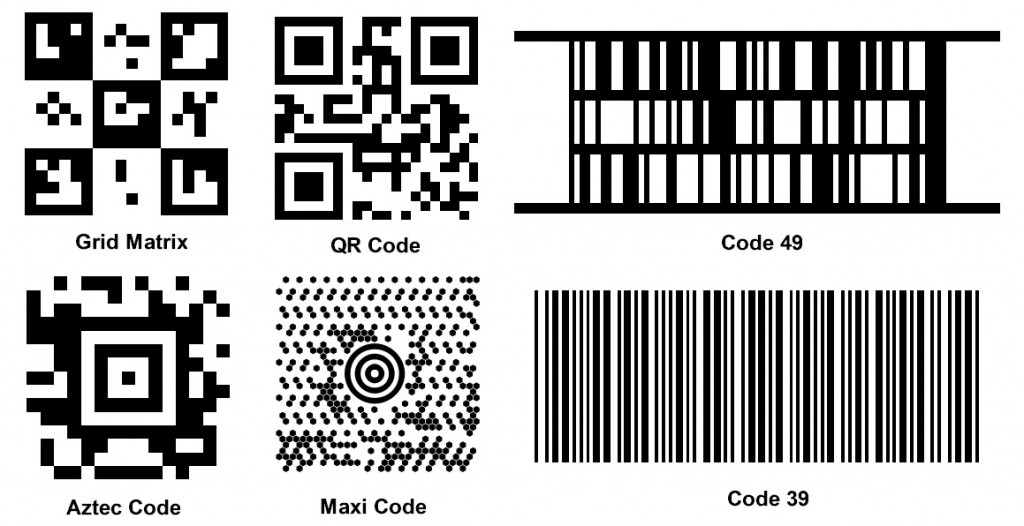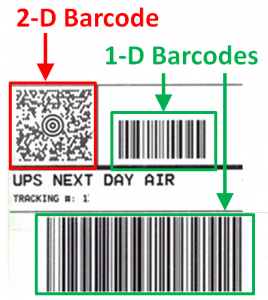Barcodes have expanded not only in use but in type as well. The conventional barcode that comes to mind for most of us is referred to as the 1D barcode. They are used to identify everything in the commercial space with an encoded number. However, barcodes have evolved to be able to store significantly more data by using a variety of 2D barcode formats. FedEx and UPS use both 1D and 2D barcodes to track their packages – the first to identify the information and the other for full shipping details.
You may also find that your new driver’s license has a 2D barcode on the back of it. Additionally, 2D barcodes have reached the mass public with recent popularity of QR codes. These barcodes have changed the way viewers interact with marketing messages and advertisements. By scanning a QR code with a cell phone, consumers are taken to videos, websites, special offers, and more.
The prevalence of the 1D barcode and the recent popularity of the 2D barcode might lead one to wonder, “Which one is right for me?” Well, it all depends on the following:

1) Amount of data: Since the 2D barcode can hold information both vertically and horizontally, it is capable of holding much more data – 4,000 characters or more! As the 1D barcode only holds information horizontally, it is limited to just a few alpha-numeric characters.
2) Size of the label: Because the 2D barcode can hold information in both directions, it can be printed much smaller than its 1D cousins for the same amount of data.
3) Speed of recognition: Since the 1D barcode only needs to be read in one direction, it is much faster to read than the 2D. Supermarkets still use the 1D barcode because scanning items is fast and easy; they get their customers through their lines as fast as possible.
A great example comes from one of our customers. They want to use 1D barcodes to track their assets, but also want the labels as small as possible while also including a graphic and some text. Linear barcodes (also referred to as 1D barcodes) need 1/4″ white space on the left and right to be read by a scanner. For this customer, we ultimately were able to order them 3/8″ X 1 1/4″ 1D barcodes.
To see for yourself how barcodes work, Zint Barcode Generator is an easy and free way to see how much information different types of barcodes can store and what the different types of barcodes look like. Simply type in the information you want to encode and see it in barcode form. Here is “Telaeris” in a few different types of barcodes:


